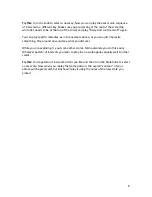
Misha’s buttons are interval-based. This introduces a new perspective even for a trained
musician, but offers the untrained a simple path to creating melodies. Rather than fixed
tones, the buttons represent movement, up or down a given scale.
Misha’s panel has 18 control buttons and all are dedicated to performance. Nine of the
control buttons are ‘primary’ controls and are arranged not unlike one octave of a piano
keyboard. Like any other keyboard instrument, when you press a button, a note is
sounded. Unlike the keys of a piano keyboard however, Misha’s buttons are not ‘tied’ to
a given note. They are ‘tied’ to the intervals of a musical scale.
Play middle C on a piano keyboard and you’ll always hear middle C. Press Misha’s middle
button (labeled “0”) and you’ll hear the last note that you played. If you played C last,
you’ll hear C again.
Now return to the Misha keyboard. If you press +1, you’ll hear D. If you press +1 again,
you’ll hear E. Try some other interval buttons, maybe alternating -2 and +1 in order to
hear a simple descending pattern. Try different combinations of interval buttons to hear
what comes out.
Take a look at the “solfege wheel” in the center of the display. The notes of the currently
selected scale are arranged in a circle, in ascending order of pitches covering an octave.
As you play, you will see your current position represented by a white dot that moves
around the circle, and at the center of the display the note is spelled out (e.g. Eb). There
is also an option also to use solfege symbols (“Do, Re, Mi”) in place of note names.
Misha also greatly simplifies the process of playing in different key signatures.
7








































